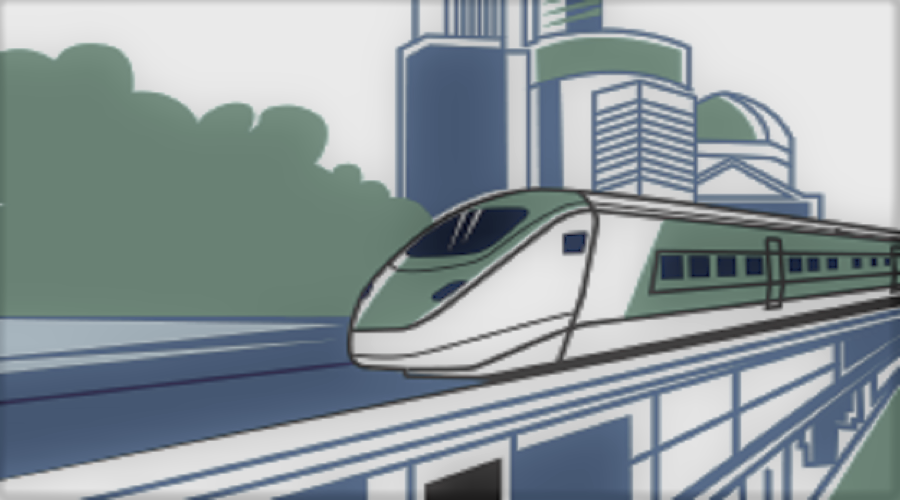A. Harikumar
Development of Kerala’s existing rail and road network, which will improve transportation and save travel time, could hamper the viability of the proposed SilverLine semi high speed rail project of the state.
This apprehension is expressed in the detailed project report (DPR) of SilverLine project to which vikasmudra got access. Kerala Rail Development Corporation (K-Rail) a joint venture company of Kerala government and the Indian Railways formed to implement SilverLine and other railway infrastructure development projects, had refrained from publishing the DPR. The DPR is prepared by Systra Group, an engineering and consulting firm specialised in providing transport and mobility solutions. Media reports quoting K-Rail said that the company will publicise details only after getting the final approval from the union government.
SilverLine corridor will connect Kasaragod, the northernmost district of Kerala with Thiruvananthapuram, the state capital at the southern end. It is expected to reduce the travel time between the two stations from the current over 12 hours to just four hours.
K-Rail is wary that NHs and SHs that run parallel to the SilverLine corridor may affect the prospects of the project negatively, but assumes that those roads which run perpendicular to the corridor will have a positive impact on the SilverLine project as it connects the project with interiors of the state. However, the DPR has also figured out a solution to the possibility of improved road mobility impacting SilverLine negatively. It is implementing toll on the widened national highways and other roads. That would negate the cost advantage of road users who will then go for SilverLine, the DPR, presumes.
Impact of road projects on SilverLine
In a chapter titled “Impact of Road Projects on SilverLine,”, the DPR notes that ‘the improvement projects of national highways (NH) and state highways (SH) such as road widening and buildling of bypasses to NH 66, NH 766, SH 69, Kasaragod- Kanjagad Road etc., which are parallel to the alignment of the SilverLine, shall have a negative impact on the ridership of the SilverLine services. This is mainly due to achieving higher journey speed and less journey time by private modes as well as buses that reduces the travel time savings,’ concludes the DPR.
However, the DPR, has surmised a solution. It notes, ‘If the NHs and SHs are made to toll roads, due to higher costs, it may lead to positive shift to SilverLine. In case of other NHs and SHs such as NH – 544, 85, 744, 966, 183, 183 A & 185 and SH perpendicular to SilverLine may act as feeder network. Any improvements such as widening will improve the travel time of first mile and last mile journey either by private vehicle or public transport. This may have a positive impact on the ridership of the SilverLine with additional provisions of inter-modal and interchange facilities with park and ride facilities.
However overall, the improvement to road project and the impact on the ridership assessment may not be significant, the DPR has a paradoxical self-reassuring concludsion too.
Impact of Rail Infrastructure Projects
Analysing the impact of development of existing railway network on the SilverLine project the DPR notes, “The doubling of lines, addition of third line and improvement to curves and improving speed on the exiting railway operations will have impact on the ridership of the SilverLine. With no increase in fares, the passengers travelling by sleeper and 3rd AC class may not be willing to shift to the SilverLine. But, if fares are increased, then no impact is expected as SilverLine provides higher travel time savings and cost savings to user is also low.
The DPR is also apprehensive about the proposed privatisation of railways. “This may bring efficiency and punctuality in operations, but may increase the fares. So, any impact on the SilverLine ridership due to operation of trains by private player is based on the fare setting,” concludes the DPR.
Conclusions
The takeaway from the apprehensions hinted in the DPR is the SilverLine project is not going to be a piece of cake. Viability of the project is dependent on many factors, and it’s going to be tough for the SilverLine project even to breakeven. One needs to factor in the huge funds, to be raised to meet the cost of the project. If the roads are developed and railway network improves, will commuters opt for an expensive SilverLine ride? SilverLine fares are likely to be very high and will there be enough passengers who won’t mind it?
Meanwhile, there are apprehensions that the state authorities could go slow or ignore other rail and road development and would encourage high tolls on widened roads to help SilverLine. The road development and transport policy might have to be reoriented to help the SilverLine project succeed. It remains to be seen.

